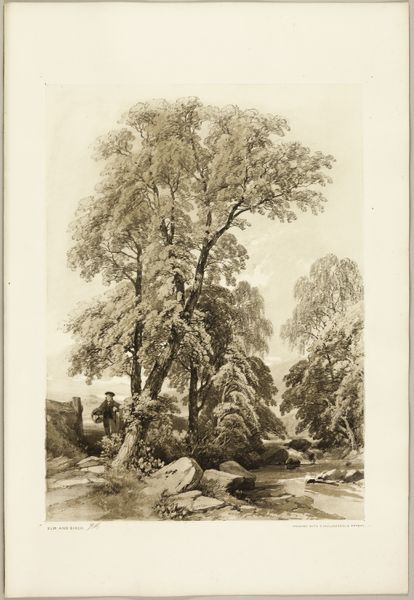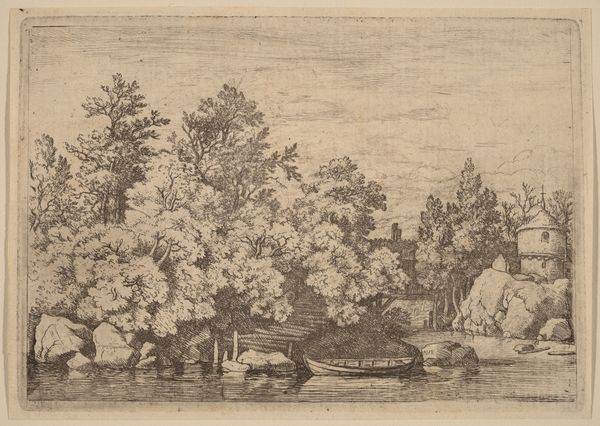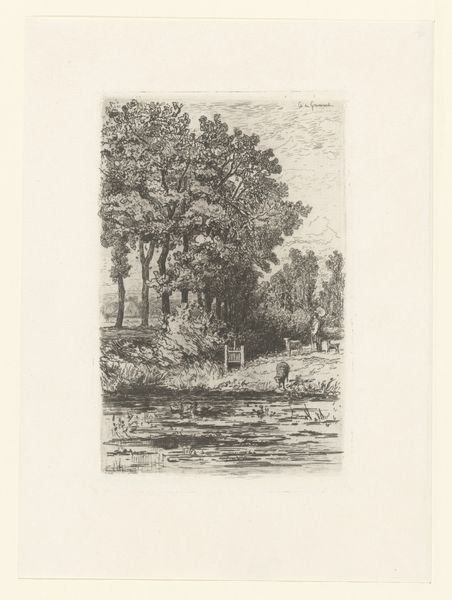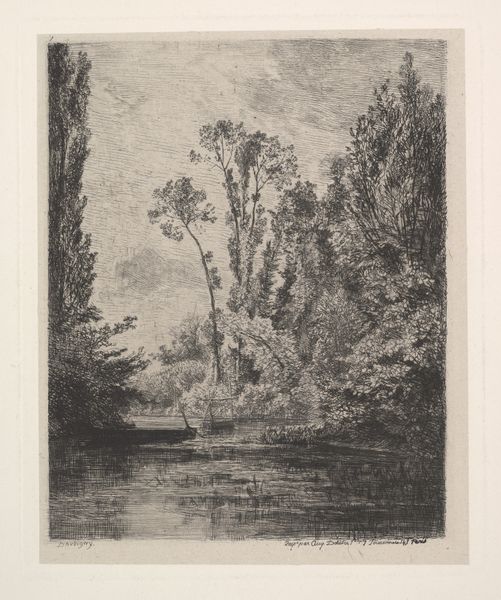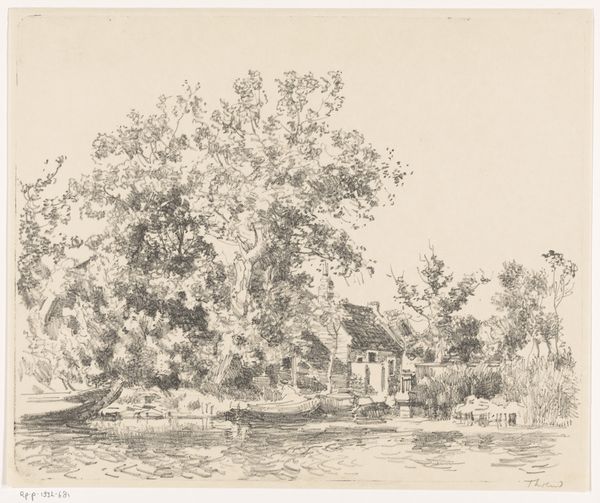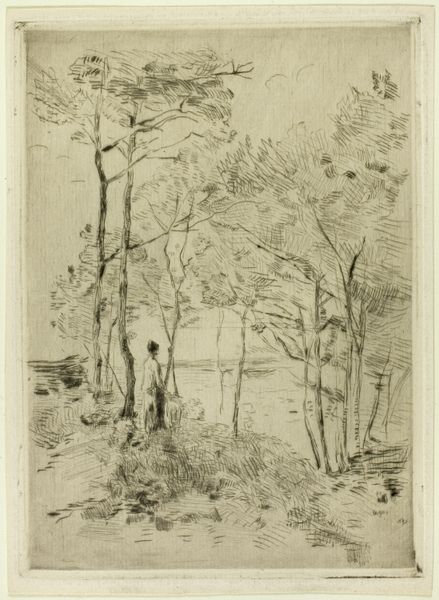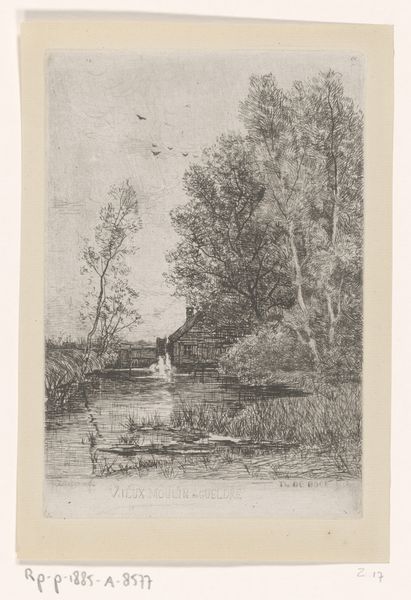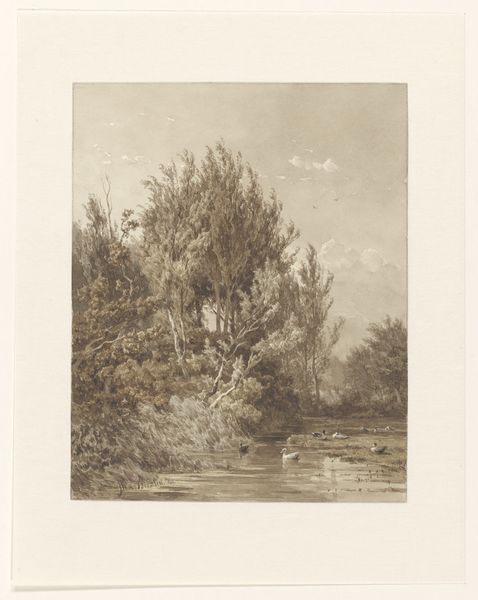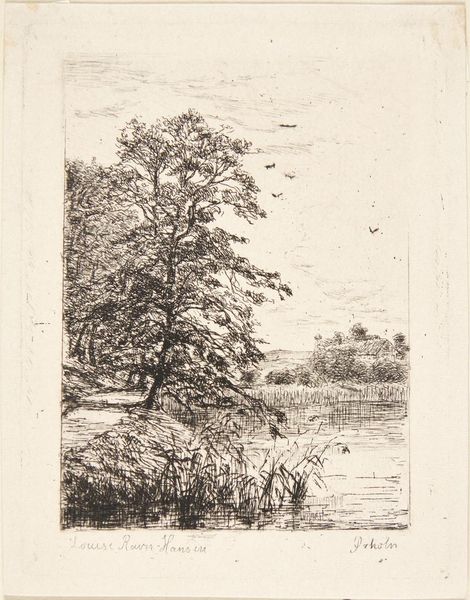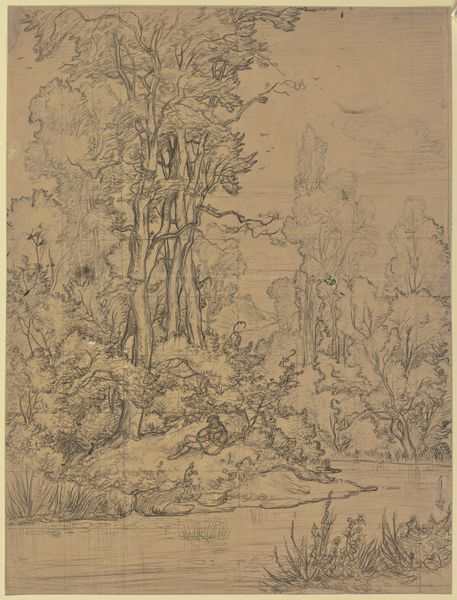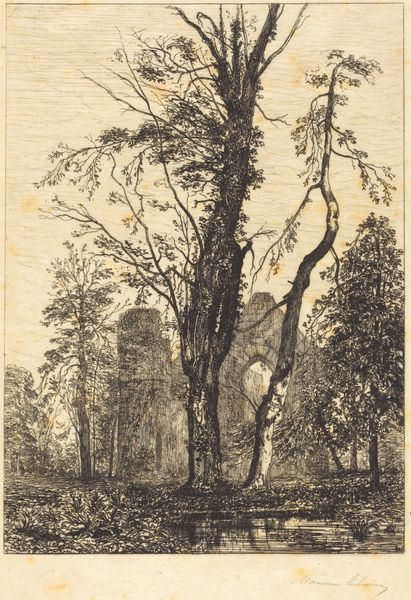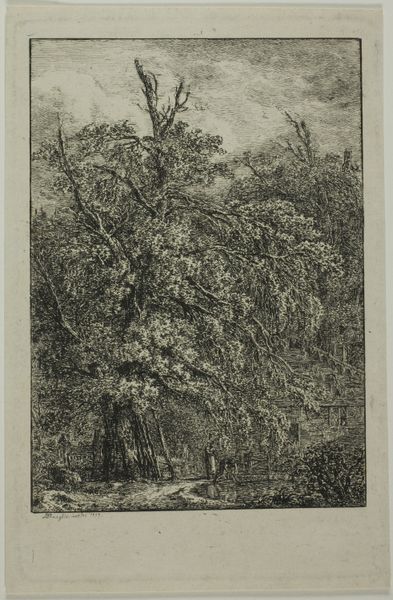
drawing, print, etching, paper
#
drawing
#
ink painting
# print
#
etching
#
landscape
#
etching
#
paper
Dimensions: 218 × 180 mm (image/plate); 258 × 205 mm (sheet)
Copyright: Public Domain
Curator: This is Donald Shaw MacLaughlan's "The Trout Stream," an etching from 1906. It resides here at the Art Institute of Chicago. Editor: The atmosphere hits you first. The tones are quite muted, creating a peaceful and slightly melancholic sensation. The composition is visually dense. Curator: Landscape prints often invoke a return to nature, a space free from the pressures of modern industrial life. Consider the rise of conservationist movements at the turn of the century; I believe it resonates. Editor: Indeed. Technically speaking, note how MacLaughlan utilizes varied line weights and densities to suggest depth and texture. See how the reflection in the water seems to vibrate against the dense vegetation? Curator: The reflections definitely act as a portal—conjuring ancient woodland spirits. Water in many traditions represents purification, passage, transformation, perhaps a link to an otherworldly domain. Editor: Perhaps. Or the trout stream simply provided sustenance, visually reinforcing notions of the bounty and sublime qualities of nature as the central subject. Let's not neglect the man on the river bank, rod in hand. Curator: Yes! Hunting and fishing serve as symbolic gestures, acts that bridge humanity with the natural order—acknowledging and respecting ancient pacts and seasonal changes. He represents us. Editor: He’s rather dwarfed by that majestic tree dominating the composition, and it draws the eye toward the top of the etching, and then pulls you back to the bottom. Its almost meditative. Curator: A beautiful encapsulation. In many indigenous cultures, old-growth trees become sacred markers symbolizing the deep time, embodying generational continuity and wisdom. They become honored ancestors. Editor: Whether a sacred symbol or simply a striking compositional element, this artwork delivers both surface pleasure and invites further exploration of form and historical context. Curator: MacLaughlan successfully provides us with a symbolic pathway. One that leads us back to our beginnings, with the trout stream serving as the artery between the seen and the unseen.
Comments
No comments
Be the first to comment and join the conversation on the ultimate creative platform.
